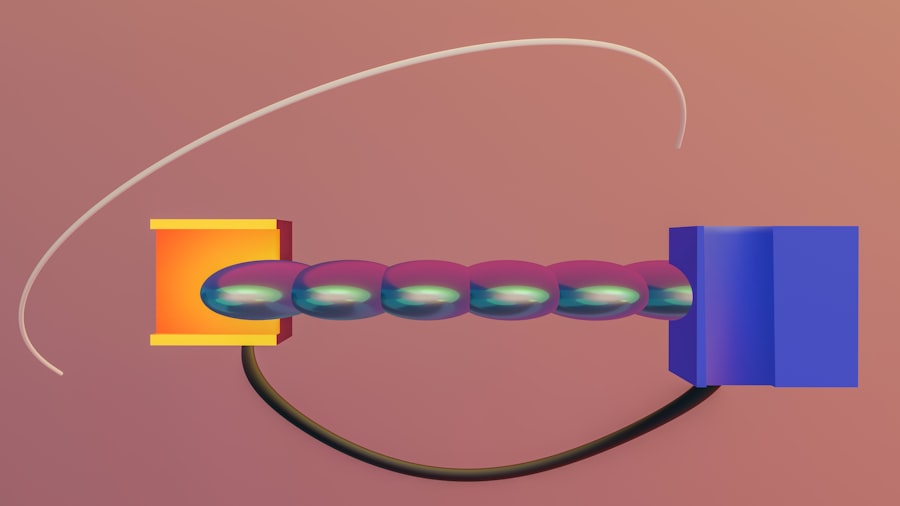The Antikythera Mechanism stands as one of the most remarkable artifacts from the ancient world, often hailed as the first known analog computer. Discovered in a shipwreck off the coast of the Greek island of Antikythera, this intricate device has captivated historians, archaeologists, and scientists alike since its unearthing in 1901. The mechanism is believed to date back to around 150-100 BCE, a time when the understanding of astronomy and mathematics was still in its infancy.
Its complexity and sophistication suggest that ancient civilizations possessed a level of technological prowess that was not fully appreciated until modern times. This ancient artifact is not merely a relic; it represents a significant leap in human ingenuity. The Antikythera Mechanism was designed to predict astronomical positions and eclipses for calendrical and astrological purposes.
Its gears and dials, meticulously crafted from bronze, reveal a deep understanding of celestial mechanics that was previously thought to have emerged much later in history. As researchers continue to study this enigmatic device, it becomes increasingly clear that the Antikythera Mechanism is not just a tool for navigation or timekeeping; it is a testament to the intellectual achievements of the ancient Greeks.
Here is the link to the Antikythera Mechanism documentary:
The complexity of the Antikythera Mechanism is nothing short of astounding. Comprising at least 30 interlocking gears, this ancient device operates on principles that would not be fully understood until centuries later. The arrangement of these gears allows for precise calculations of celestial events, showcasing an advanced understanding of mechanical engineering that was unprecedented for its time.
Each gear is meticulously crafted, with inscriptions that provide insight into its function and purpose. What sets the Antikythera Mechanism apart from other ancient devices is its ability to model complex astronomical phenomena. It could predict solar and lunar eclipses, track the cycles of the moon, and even account for irregularities in the lunar calendar.
This level of sophistication suggests that its creators possessed not only technical skills but also a profound understanding of astronomy and mathematics. The mechanism’s design reflects a harmonious blend of art and science, illustrating how ancient cultures sought to comprehend and represent the cosmos.
The Function and Purpose of the Antikythera Mechanism
Aspect Description Origin Discovered in a shipwreck off the coast of Antikythera, Greece in 1901 Age Estimated to have been built around 100-200 BCE Function Used to track astronomical positions and predict eclipses Components Contains at least 30 bronze gears and is housed in a wooden case Importance Considered one of the most complex devices from antiquity and a significant advancement in ancient technology The primary function of the Antikythera Mechanism was to serve as an astronomical calculator, enabling users to predict celestial events with remarkable accuracy. By turning a hand-crank, users could set the mechanism in motion, allowing it to display various astronomical cycles on its dials. This included tracking the positions of celestial bodies such as the sun and moon, as well as predicting eclipses based on established cycles.
The device was likely used by astronomers and navigators who relied on accurate celestial data for their work. In addition to its practical applications, the Antikythera Mechanism also held cultural significance. It served as a tool for understanding time and space within the context of ancient beliefs and practices.
The ability to predict eclipses and other celestial events would have been invaluable for religious ceremonies and agricultural planning. Thus, while its primary function was scientific, it also played a role in shaping societal norms and practices in ancient Greece.
The Significance of the Antikythera Mechanism in Ancient Technology
The Antikythera Mechanism represents a pivotal moment in the history of technology. Its existence challenges long-held assumptions about the capabilities of ancient civilizations, particularly in terms of mechanical engineering and astronomical knowledge. Prior to its discovery, many scholars believed that such advanced technology did not emerge until much later in history.
The mechanism’s intricate design and functionality suggest that ancient Greeks were not only capable of creating complex machines but also had a sophisticated understanding of how to apply mathematical principles to real-world problems. Moreover, the significance of the Antikythera Mechanism extends beyond its immediate technological achievements. It serves as a bridge between ancient knowledge and modern science, illustrating how early innovations laid the groundwork for future advancements.
The principles embodied in this device can be seen echoed in later inventions throughout history, highlighting its enduring impact on technological development.
Modern Study and Analysis of the Antikythera Mechanism
In recent years, modern technology has breathed new life into the study of the Antikythera Mechanism.
Researchers have employed advanced imaging techniques such as X-ray tomography and 3D modeling to gain deeper insights into its construction and functionality.
These methods have allowed scientists to visualize the internal components without causing further damage to the fragile artifact.
As a result, new discoveries continue to emerge, shedding light on how this ancient device operated. The ongoing analysis has revealed previously unknown features and functions of the mechanism. For instance, researchers have identified additional dials that were not initially recognized, suggesting that it may have had even more capabilities than previously thought.
This modern approach to studying the Antikythera Mechanism exemplifies how interdisciplinary collaboration—combining fields such as archaeology, engineering, and computer science—can lead to groundbreaking discoveries about our past.
The Mystery of the Antikythera Mechanism’s Origins
Despite extensive research, many questions remain regarding the origins of the Antikythera Mechanism. Scholars continue to debate who created it and where it was made. Some theories suggest that it may have been developed in a workshop on Rhodes or in another major center of Hellenistic culture.
The craftsmanship displayed in its construction indicates that it was likely produced by skilled artisans who possessed advanced knowledge of both mechanics and astronomy. Additionally, there is ongoing speculation about how such knowledge was transmitted across cultures during antiquity. The influence of Babylonian astronomy on Greek thought is well-documented, but how this knowledge translated into practical applications like the Antikythera Mechanism remains unclear.
This mystery adds an intriguing layer to the artifact’s story, prompting researchers to explore connections between different civilizations and their contributions to early scientific thought.
The Cultural and Historical Context of the Antikythera Mechanism
To fully appreciate the significance of the Antikythera Mechanism, one must consider its cultural and historical context. During the Hellenistic period, there was a flourishing of intellectual pursuits across Greece and beyond. This era saw advancements in philosophy, mathematics, and astronomy, driven by figures such as Archimedes and Hipparchus.
The creation of such an intricate device reflects this spirit of inquiry and innovation that characterized ancient Greek society. Moreover, the mechanism’s existence highlights the interconnectedness of various cultures during this time. Trade routes facilitated not only the exchange of goods but also ideas and knowledge across regions.
The blending of different intellectual traditions likely contributed to the development of technologies like the Antikythera Mechanism, underscoring how collaboration among diverse cultures can lead to remarkable advancements.
The Legacy and Influence of the Antikythera Mechanism
The legacy of the Antikythera Mechanism extends far beyond its immediate historical context; it has influenced generations of thinkers and inventors throughout history. Its design principles can be seen reflected in later mechanical devices, including astronomical clocks and early computers. The mechanism serves as an early example of how complex systems can be engineered to solve practical problems—a concept that continues to resonate in modern technology.
Furthermore, its discovery has inspired renewed interest in ancient science and technology, prompting scholars to reevaluate other artifacts from antiquity with fresh eyes. The Antikythera Mechanism has become a symbol of human ingenuity, representing both our quest for knowledge and our ability to create tools that enhance our understanding of the universe.
The Antikythera Mechanism’s Impact on Our Understanding of Ancient Civilization
The study of the Antikythera Mechanism has significantly impacted our understanding of ancient civilizations’ capabilities and achievements. It challenges preconceived notions about technological progress by demonstrating that advanced mechanical devices existed long before what was previously thought possible. This revelation has led historians to reconsider other aspects of ancient life, including trade practices, scientific inquiry, and cultural exchanges.
Moreover, by examining how such devices were used within their societal context, researchers gain insights into how ancient peoples interacted with their environment and understood their place within it. The Antikythera Mechanism serves as a lens through which scholars can explore broader themes related to knowledge production and technological innovation in antiquity.
The Future of Research and Exploration of the Antikythera Mechanism
As research into the Antikythera Mechanism continues to evolve, there remains much to uncover about this extraordinary artifact. Future studies may focus on further deciphering its inscriptions or exploring potential connections with other ancient technologies across different cultures. Advances in imaging techniques promise to reveal even more about its construction and functionality without compromising its integrity.
Additionally, interdisciplinary collaboration will likely play a crucial role in future research endeavors. By bringing together experts from various fields—such as archaeology, engineering, history, and computer science—scholars can develop new methodologies for studying ancient artifacts like the Antikythera Mechanism. As interest in this remarkable device persists, it will undoubtedly continue to inspire curiosity about our shared human heritage and our quest for knowledge throughout history.
The Antikythera Mechanism, often regarded as the world’s first analog computer, has fascinated historians and scientists alike due to its intricate design and advanced technology for its time. For a deeper dive into the full story of this remarkable artifact, you can explore a related article that provides comprehensive insights and analysis. Check it out here: Antikythera Mechanism Full Story.
WATCH THIS! The Antikythera Mechanism Is Not Human Tech
FAQs
What is the Antikythera Mechanism?
The Antikythera Mechanism is an ancient Greek analog computer and orrery used to predict astronomical positions and eclipses for calendrical and astrological purposes.
When was the Antikythera Mechanism discovered?
The Antikythera Mechanism was discovered in 1901 in the Antikythera shipwreck off the coast of the Greek island of Antikythera.
Who built the Antikythera Mechanism?
The creator of the Antikythera Mechanism is unknown, but it is believed to have been constructed by Greek scientists and engineers around 100-150 BCE.
What is the significance of the Antikythera Mechanism?
The Antikythera Mechanism is considered one of the most important archaeological discoveries and is often referred to as the world’s first analog computer. It demonstrates the advanced knowledge of ancient Greek astronomy and engineering.
How does the Antikythera Mechanism work?
The Antikythera Mechanism consists of a complex system of gears and dials that could track the movements of the sun, moon, and planets, predict eclipses, and display the dates of the ancient Olympic games.
Where is the Antikythera Mechanism currently located?
The remains of the Antikythera Mechanism are housed in the National Archaeological Museum in Athens, Greece.

